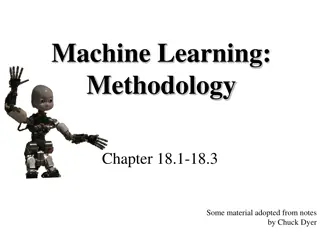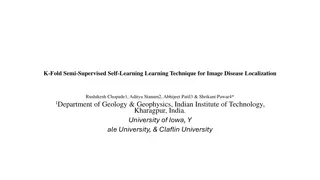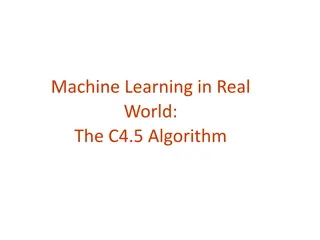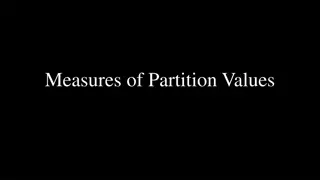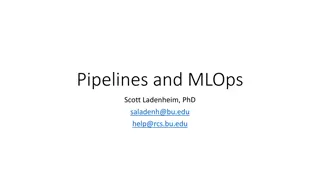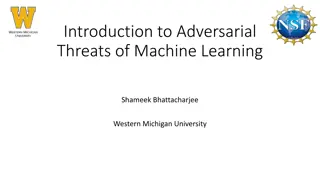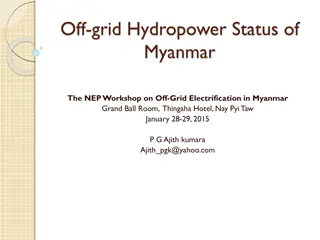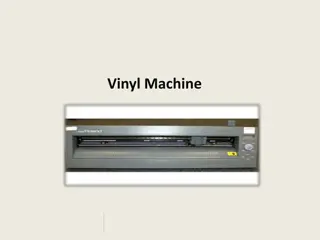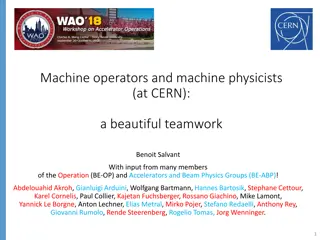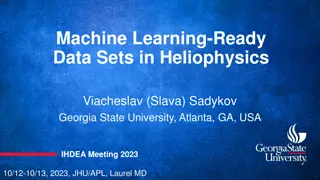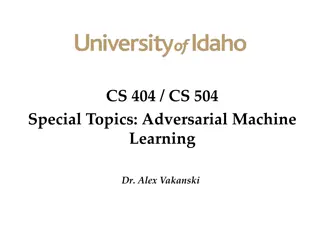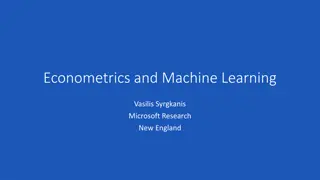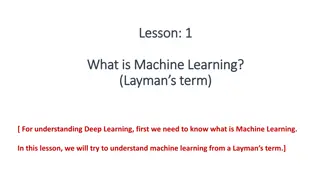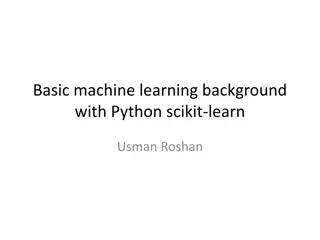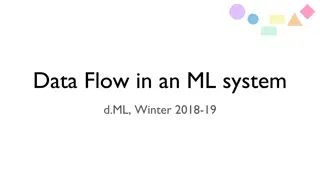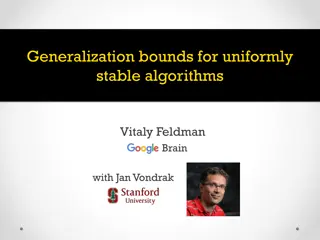Best Practices for Dataset Handling in Machine Learning Projects
Proper dataset handling is crucial in machine learning projects. Use publicly available datasets with train/dev/test splits or create your own. Be cautious of overfitting by utilizing independent validation and test sets. Avoid touching the test set until final evaluation to prevent overfitting. Maintain separate datasets for training, tuning, development, and testing to ensure accurate system performance measurement.
Download Presentation

Please find below an Image/Link to download the presentation.
The content on the website is provided AS IS for your information and personal use only. It may not be sold, licensed, or shared on other websites without obtaining consent from the author. Download presentation by click this link. If you encounter any issues during the download, it is possible that the publisher has removed the file from their server.
E N D
Presentation Transcript
Project Advice Adapted from: http://web.stanford.edu/class/cs224n/slides/cs224n- 2020-lecture11-convnets.pdf Christopher Manning Stanford University
Use of datasets Many publicly available datasets are released with a train/dev/test structure. We're all on the honor system to do test-set runs only when development is complete. Splits like this presuppose a fairly large dataset. If there is no dev set or you want a separate tune set, then you create one by splitting the training data, though you have to weigh its size/usefulness against the reduction in train-set size. Having a fixed test set ensures that all systems are assessed against the same gold data. This is generally good, but: It is problematic where the test set turns out to have unusual properties that distort progress on the task. It doesn t give any measure of variance. It s only an unbiased estimate of the mean if only used once.
Dealing with overfit When training, models overfit to what you are training on The model correctly describes what happened to occur in particular data you trained on, but the patterns are not general enough patterns to be likely to apply to new data The way to avoid problematic overfitting (lack of generalization) is using independent validation and test sets ...
Dont touch the test set You build (estimate/train) a model on a training set. Often, you then set further hyperparameters on another, independent set of data, the tuning set The tuning set is the training set for the hyperparameters! You measure progress as you go on a dev set (development test set or validation set) If you do that a lot you overfit to the dev set so it can be good to have a second dev set, the dev2 set Only at the end, you evaluate and present final numbers on a test set Use the final test set extremely few times ... ideally only once
Separate datasets The train, tune, dev, and test sets need to be completely distinct It is invalid to test on material you have trained on You will get a falsely good performance. We usually overfit on train You need an independent tuning set The hyperparameters won t be set right if tune is same as train If you keep running on the same evaluation set, you begin to overfit to that evaluation set Effectivelyyouare training ontheevaluationset...youarelearning things that do and don t work on that particular eval set and using the info To get a valid measure of system performance you need another untrained on, independent test set ... hence dev2 and final test
Training Experiments Start with a positive attitude! Neural networks want to learn! If the network isn t learning, you re doing something to prevent it from learning successfully Realize the grim reality: There are lots of things that can cause neural nets to not learn at all or to not learn very well Finding and fixing them ( debugging and tuning ) can often take more time than implementing your model It s hard to work out what these things are But experience, experimental care, and rules of thumb help!
Models are sensitive to learning rates From Andrej Karpathy, CS231n course notes
Models are sensitive to initialization From Michael Nielsen http://neuralnetworksanddeeplearning.com/chap3.htm
Training a gated RNN 1. Use an LSTM or GRU: it makes your life so much simpler! 2. Initialize recurrent matrices to be orthogonal 3. Initialize other matrices with a sensible (small!) scale 4. Initialize forget gate bias to 1: default to remembering 5. Use adaptive learning rate algorithms: Adam, AdaDelta, ... 6. Clip the norm of the gradient: 1 5 seems to be a reasonable 7. threshold when used together with Adam or AdaDelta. 8. Either only dropout vertically or look into using Bayesian Dropout (Gal & Gahramani) 9. Be patient! Optimization takes time
Experimnetal strategy Work incrementally! Start with a very simple model and get it to work! It s hard to fix a complex but broken model Add bells and whistles one-by-one and get the model working with each of them (or abandon them) Initially run on a tiny amount of data You will see bugs much more easily on a tiny dataset Something like 4 8 examples is good Often synthetic data is useful for this Make sure you can get 100% on this data Otherwise your model is definitely either not powerful enough or it is broken
Experimental strategy Run your model on a large dataset It should still score close to 100% on the training data after optimization Otherwise, you probably want to consider a more powerful model Overfitting to training data Is not something to be scared of when doing deep learning These models are usually good at generalizing because of the way distributed representations share statistical strength regardless of overfitting to training data But, still, you now want good generalization performance: Regularize your model until it doesn t overfit on dev data Strategies like L2 regularization can be useful But normally generous dropout is the secret to success
Details matter! Be very familiar with your (train and dev) data, don t treat it as arbitrary bytes in a file! Look at your data, collect summary statistics Look at your model s outputs, do error analysis Tuning hyperparameters is really important to almost all of the successes of NNets










